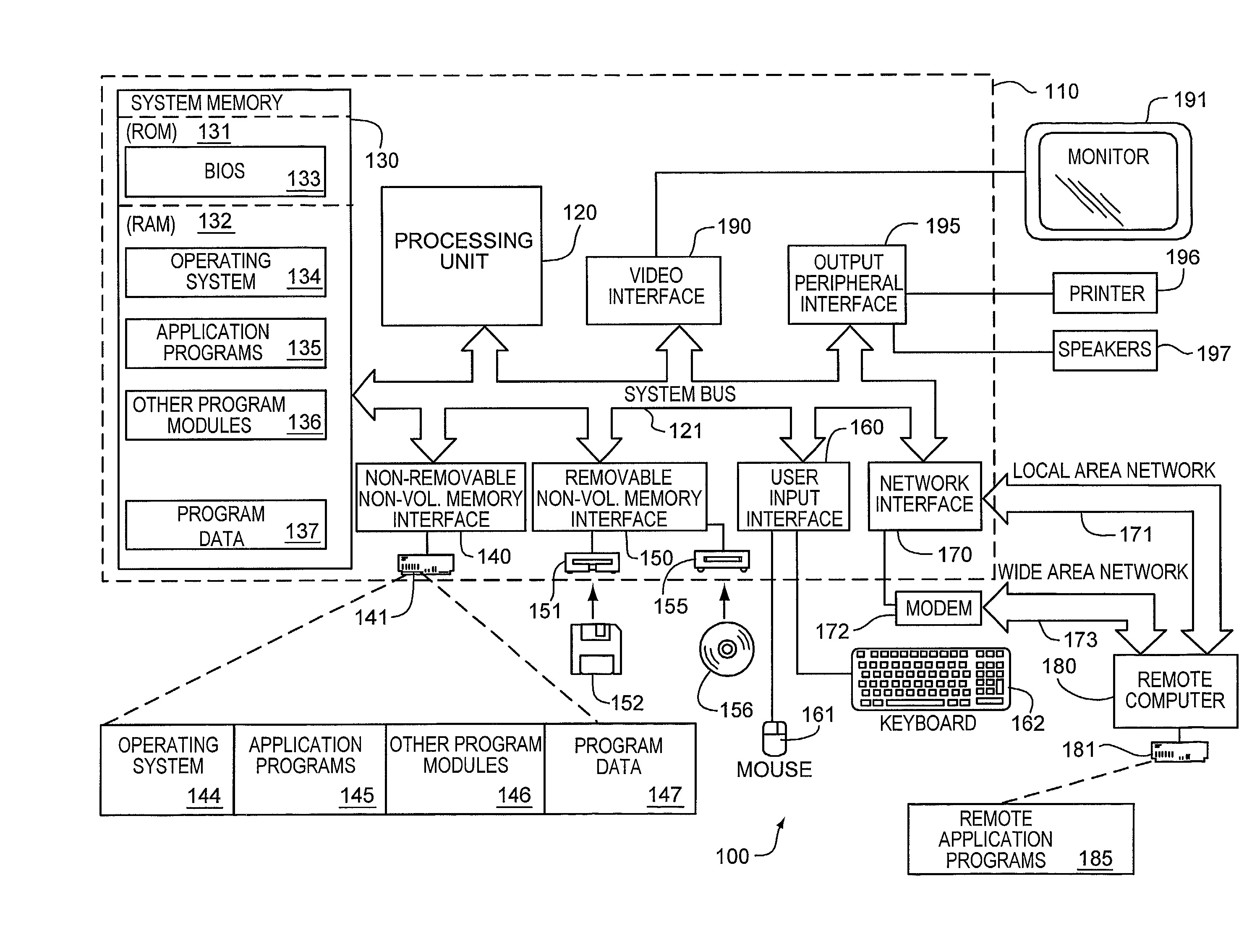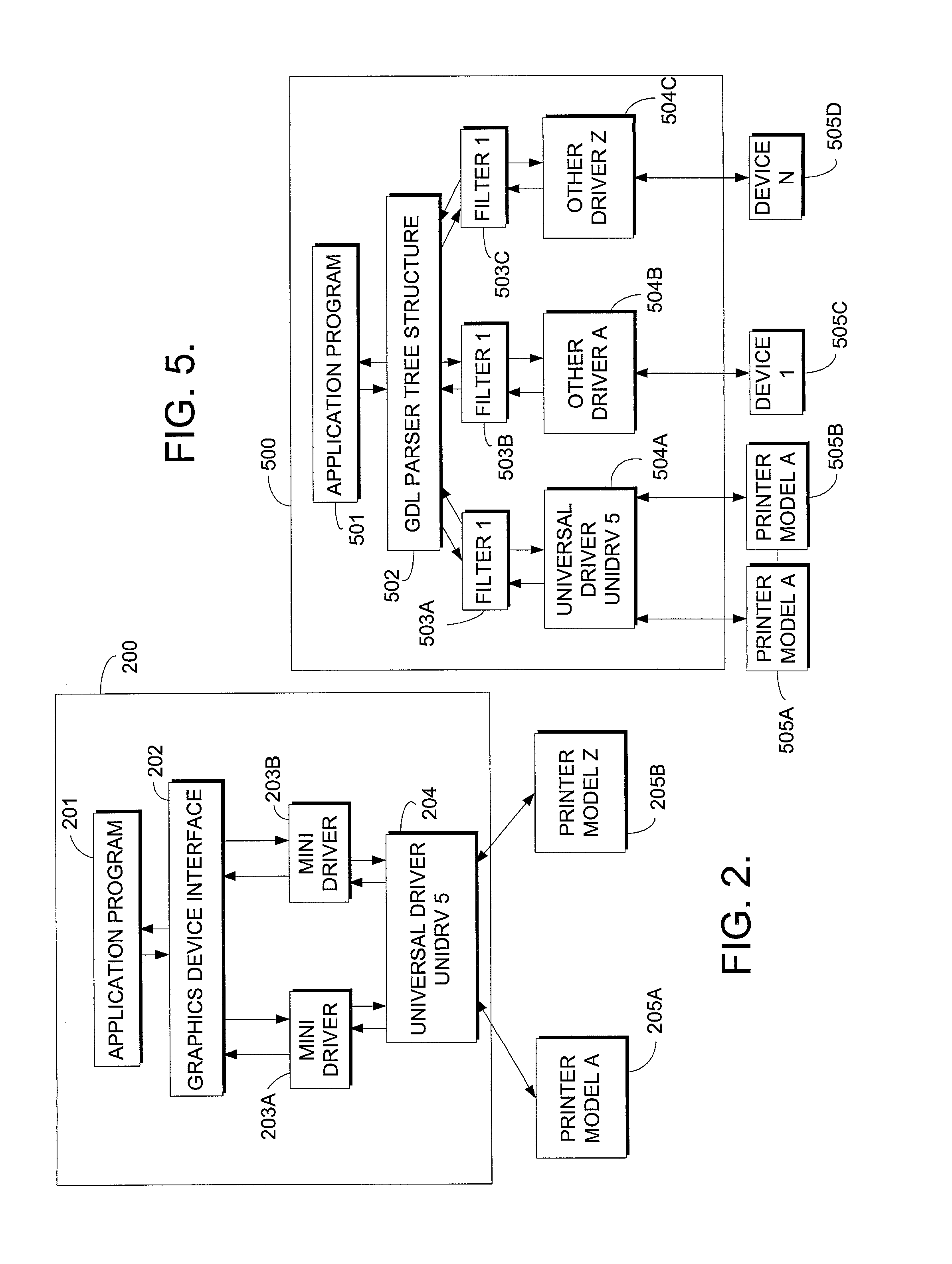Method for generic object oriented description of structured data (GDL)
a structured data and object-oriented technology, applied in the field of computer software, can solve the problems of large size, inability to produce actual printer control commands, and inability to use such extensive drivers, and achieve the effect of facilitating semantic and definitional information verification
- Summary
- Abstract
- Description
- Claims
- Application Information
AI Technical Summary
Benefits of technology
Problems solved by technology
Method used
Image
Examples
Embodiment Construction
[0019]The present invention provides a method and language for organizing, defining and obtaining information associated with various subjects utilizing a computer system. By way of example, and not limitation, subject data includes computer devices, abstract ideas, music and other such information or concepts. FIG. 1 illustrates an example of a suitable computing system environment 100 in which the invention may be implemented. The computing system environment 100 is only one example of a suitable computing environment and is not intended to suggest any limitation as to the scope of use or functionality of the invention. Neither should the computing environment 100 be interpreted as having any dependency or requirement relating to any one or combination of components illustrated in the exemplary operating environment 100.
[0020]The invention is operational with numerous other general purpose or special purpose computing system environments or configurations. Examples of well known c...
PUM
 Login to View More
Login to View More Abstract
Description
Claims
Application Information
 Login to View More
Login to View More - R&D
- Intellectual Property
- Life Sciences
- Materials
- Tech Scout
- Unparalleled Data Quality
- Higher Quality Content
- 60% Fewer Hallucinations
Browse by: Latest US Patents, China's latest patents, Technical Efficacy Thesaurus, Application Domain, Technology Topic, Popular Technical Reports.
© 2025 PatSnap. All rights reserved.Legal|Privacy policy|Modern Slavery Act Transparency Statement|Sitemap|About US| Contact US: help@patsnap.com



